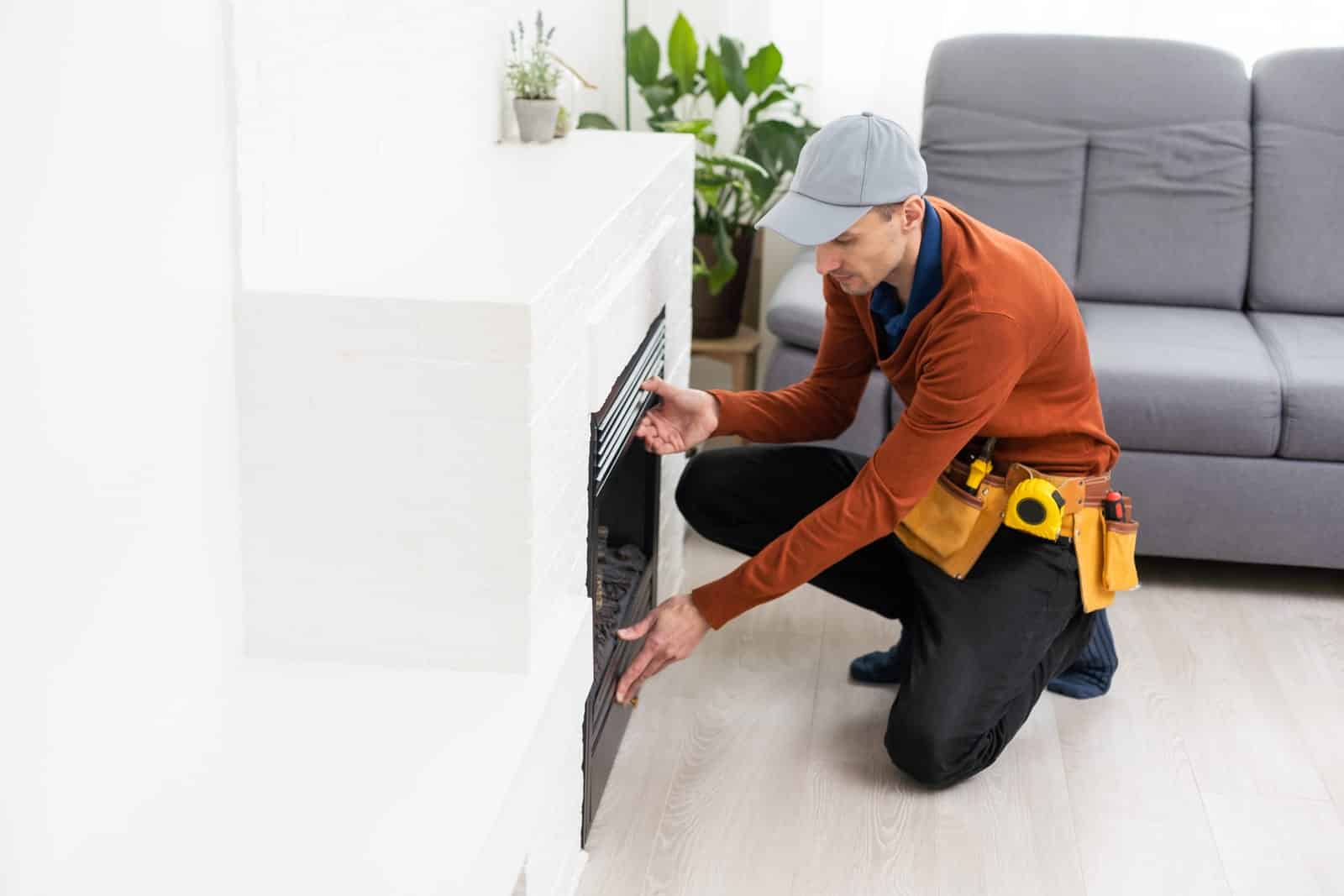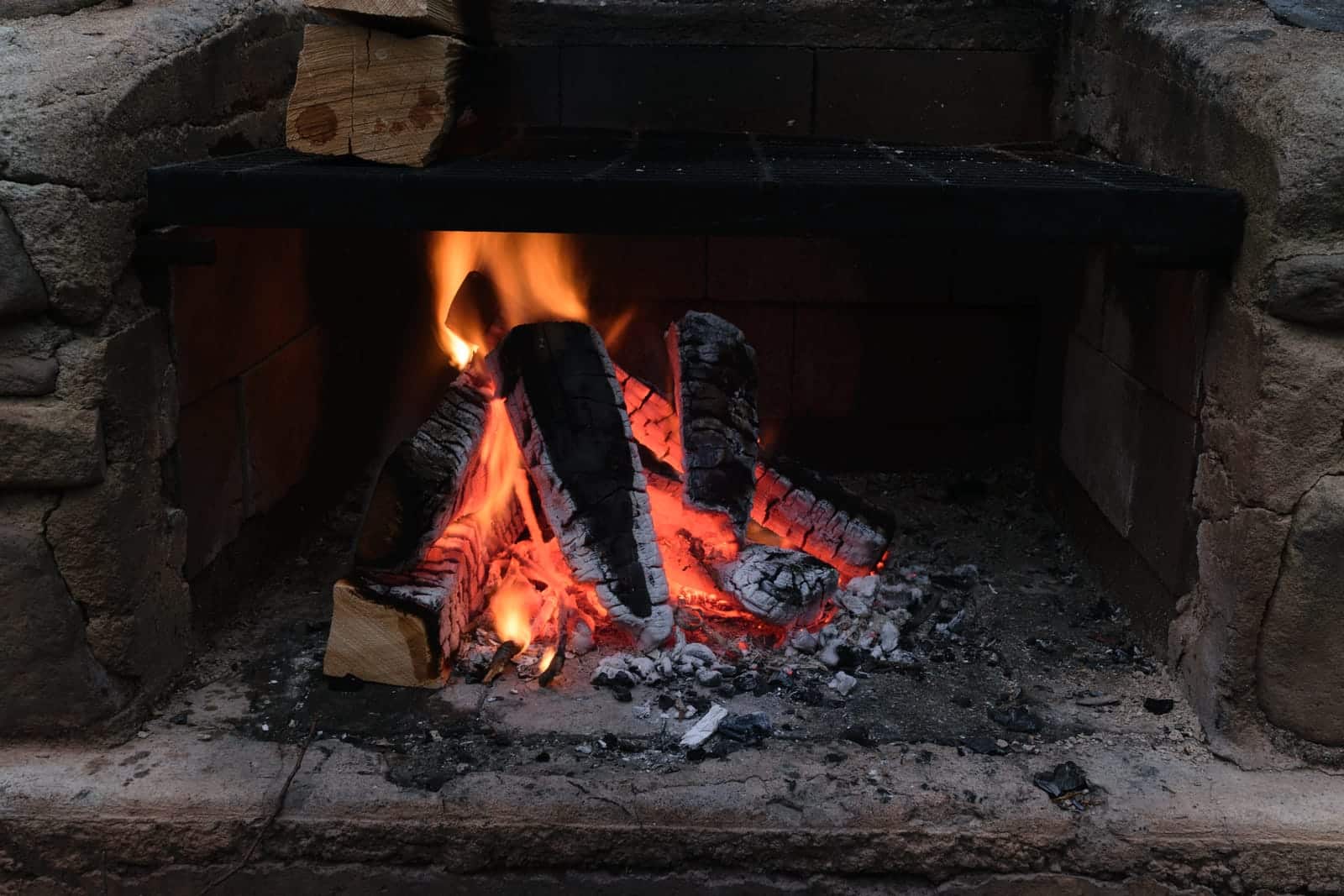There’s nothing quite like the warm glow of a crackling indoor fire during the Australian winter. Whether it’s in a fireplace or a wood heater, it provides not only heat but also a comforting atmosphere. But to fully enjoy that ambiance, proper preparation and maintenance are essential. From choosing the right wood to understanding fire safety regulations, this guide covers everything you need for a safe, efficient, and enjoyable indoor fire.
Fireplace and Wood Heater Safety in Australia
In Australia, regular maintenance of fireplaces and wood heaters is essential for both safety and performance. The standards emphasise the importance of annual inspections and cleaning by a licensed professional. These inspections identify blockages, creosote build-up, or any structural issues in chimneys or flues.
Creosote, which is a highly flammable byproduct of burning wood, can lead to chimney fires if not properly removed. Equally important is managing airflow using dampers. A fully open damper is ideal for starting a fire, while partially closing it helps maintain a longer, slower burn.
It’s crucial to regularly clear out ash and debris, not just for cleanliness, but also to ensure steady airflow. Professional chimney sweeps in Australia use specialised tools to thoroughly clean flues and chimneys, ensuring your system runs safely and efficiently
Choosing the Right Firewood:
In Australia, native hardwoods like ironbark, red gum, and box are ideal for burning. These woods are dense, burn hotter and longer, and produce less smoke when well-seasoned. Avoid using softwoods like pine, which burn quickly and create more creosote.
Firewood should be split and seasoned for at least 6–12 months, with a moisture content below 20%. Store your wood off the ground and under cover, but well-ventilated to keep it dry. Dry kindling, such as eucalyptus leaves, bark, or small twigs, helps get fires going quickly and efficiently.
Building and Lighting Your Fire:
There are various methods for laying a fire, with the teepee and log cabin styles being most common. The key is leaving enough space between the wood to allow good airflow.
When adding larger logs, do so gradually. The top-down method of placing large logs at the bottom, with kindling and small wood on top is popular for efficient, low-maintenance burning.
Lighting can be done with traditional methods like matches and paper, or using modern tools such as electric fire starters or propane torches (used cautiously and in line with safety guidelines). Commercial firelighters or natural alternatives like wax-dipped pine cones are handy when quick ignition is needed.
Maintaining Airflow:
Airflow is critical for efficient combustion and safety. Adjust the damper throughout the burn cycle to control the intensity of the fire. Some modern Australian wood heaters come with secondary air controls, improving efficiency and reducing emissions. These features help your fire burn hotter and cleaner which is great for both your home and the environment.
Safety Precautions:
According to Australian Standards and local council guidelines, all indoor wood heaters must be compliant with national regulations (AS/NZS 4012 & 4013 for performance and emissions). Importantly:
- All wood heaters should be fully enclosed to reduce spark hazards.
- Use a metal screen or glass door to prevent embers from escaping when opening the heater.
- Keep a bottle of water or a fire blanket nearby in case an ember escapes.
- Always have a working fire extinguisher in an easily accessible location.
- Ensure everyone in your household knows how to use it.
Smoke alarms are required by law in every Australian home. You must install:
- Photoelectric alarms (as required in some states like QLD) that are interconnected and hardwired where applicable.
- At least one smoke alarm on each level of the house.
- Smoke alarms within or near every sleeping area.
Proper Ventilation:
Always ensure proper ventilation to avoid the build-up of carbon monoxide which is a colourless, odourless, and deadly gas. Install carbon monoxide detectors near your wood heater or fireplace and in sleeping areas. Opening a window slightly can also help with airflow, especially in tightly sealed modern homes.
Regular Maintenance:
Scheduling professional chimney cleanings at least annually is a non-negotiable practice for maintaining a safe and efficient fireplace. This routine service not only removes creosote buildup which is a common precursor to chimney fires, but it also allows for a comprehensive inspection of the chimney’s structural integrity. Promptly sealing any cracks or gaps in the chimney structure is equally crucial. This preventive measure prevents heat loss, enhances energy efficiency, and mitigates the risk of potential structural damage. Regular maintenance, in the form of systematic inspections and timely repairs, ensures the longevity and optimal functioning of the entire heating system in Australia.

Extinguishing Safely:
Using a fireplace tool to disperse embers before extinguishing the fire ensures a more efficient cooling process. Allowing ashes to cool completely in a designated metal container before disposal is a practice rooted in responsible ash handling and disposal. Embers can remain hot for extended periods, posing a potential fire risk. This cautious approach to extinguishing and ash disposal minimises the risk of accidental fires, aligning with best practices for ensuring safety and maintaining a controlled environment even after the fire has been extinguished.
Additional Lighting Methods for Australian Indoor Log Fires:
Traditional Fire Starter:
Gathering the essential materials for a traditional fire start involves using newspaper, small dry twigs as kindling, and dry, seasoned firewood. Begin by crumpling several sheets of newspaper and placing them at the base of the fireplace. Arrange a stack of dry kindling over the newspaper in a teepee or log cabin style, ensuring proper airflow. Position seasoned firewood on top, leaving spaces between the logs for air circulation. Ignite the newspaper at multiple points, and as the kindling catches fire, it will gradually ignite the larger logs. This time-tested method provides a gradual, controlled burn that effectively warms the space.
Firelighters or Fire Starters:
For a quick and reliable ignition, commercial firelighters are an excellent option in Australia. Along with firelighters, gather kindling and firewood. These firelighters, available in various forms, are designed to ignite easily and sustain a flame. Place the firelighter at the base of the fireplace, surrounded by a carefully arranged stack of kindling and stacked firewood. Light the firelighter, and as it burns, it will ignite the surrounding kindling and logs. This method is particularly useful when time is a factor, providing a convenient choice for efficient ignition.
Propane Torch:
Utilising a propane torch requires ensuring you have dry, seasoned firewood. This method provides a powerful, controlled flame for starting an indoor log fire efficiently. Hold the flame directly onto the kindling or firewood in the fireplace, ensuring that all areas are exposed. The high temperature of the torch quickly ignites the wood, offering a fast and efficient way to start the fire. This approach is especially handy when a quick and reliable ignition is needed without the use of additional accelerants.
Electric Fire Starters:
This modern and safe option for starting an indoor log fire requires an electric fire starter or hot air blower, along with kindling and firewood. Place the device among the carefully arranged kindling and firewood in the fireplace. Turn it on to generate heat, and as the kindling catches fire, it will ignite the logs. Electric fire starters eliminate the need for open flames, making them suitable for indoor use. Additionally, they are adjustable, allowing you to control the temperature and intensity of the fire.
Charcoal Chimney Starter:
While commonly used for charcoal, a chimney starter can also be adapted for indoor log fires. Gather a charcoal chimney starter, newspaper, kindling, and firewood for this method. Place crumpled newspaper in the bottom compartment and fill the top compartment with kindling and firewood. Ignite the newspaper at the bottom, and as the kindling catches fire, it will ignite the firewood. This structured and controlled approach facilitates efficient airflow for combustion, making it a suitable method for starting Australian fires indoors.
Magnesium Fire Starter:
Prepare a magnesium fire starter, striker, and kindling for this method. Shave magnesium from the fire starter onto a pile of kindling in the fireplace. Use the striker to create sparks, igniting the magnesium. The high-temperature sparks ignite the magnesium, creating a hot flame that quickly catches the kindling on fire. This method is particularly useful in challenging conditions where reliable ignition is essential. Magnesium fire starters are lightweight and portable, making them a practical tool for both indoor and outdoor fire starting.
Incorporating these additional details provides a comprehensive understanding of the materials needed and the step-by-step process involved in lighting an indoor log fire. Always prioritise safety, and proper ventilation, and adhere to local regulations when starting and maintaining indoor fires.
In embracing these comprehensive practices, individuals gain a profound understanding of the intricacies involved in creating a safe, efficient, and enjoyable fireplace or wood stove experience. The synergy of these detailed steps not only enhances safety but also elevates the ambience of the indoor space. Always prioritise safety and stay informed about the specific requirements of your heating system for a seamless and secure indoor fire experience. Whether you opt for traditional fire-starting methods or embrace modern alternatives, the magic of an indoor fire is best enjoyed when coupled with a commitment to safety, meticulous maintenance, and an appreciation for the timeless art of creating the perfect blaze in Australia.
